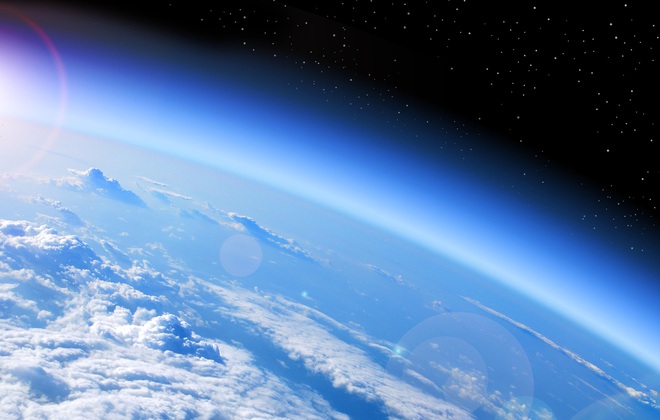Unexpected benefits from the pandemic: the ozone layer recovered 15 years faster than expected
- Tram Ho
New estimates from NASA show that ozone pollution levels in May and June 2020 decreased by 2%, largely due to reduced emissions in Asia and the US.
This may not sound like much, but experts say this level of reduction could have taken at least 15 years, given the emissions reduction policies put in place by the multi-governmental panel. on Climate Change is applied most harshly.
” I’m surprised by the environmental impact of this pandemic, ” said Jessica Neu, a research fellow in atmospheric composition at NASA’s rocket booster laboratory.
Ozone in the upper atmosphere helps shield our planet from dangerous radiation from the sun. But in the lower layers, ozone can cause respiratory discomfort and increase mortality from cardiovascular and respiratory diseases. Ozone is not a direct human waste. O3 is produced when light interacts with nitrous oxide (NOx) molecules that are released from vehicles, factories, power plants, and smelters.
However, the relationship between nitrous oxide and low-altitude ozone is difficult to predict. Reactions are also highly dependent on interactions with weather and other airborne emissions. In some cases, the reduction in NOx resulted in an increase in the amount of ozone. For example, when China reduced fine dust emissions a few years ago, this caused an unexpected increase in ozone levels.
NASA discovered isolation – social distancing helps reduce atmospheric pollution.
Scientists see the social distancing campaign of the past year as an opportunistic situation to see what would happen to the atmosphere if human activity and the amount of waste generated by activities were that movement decreased sharply. Thanks to the knowledge gained, we can come up with more effective environmental solutions.
By importing data from multiple satellites over the year 2020 into four atmospheric response prediction models, researchers at NASA found that NOx emissions fluctuated up and down with magnitudes related to distance events. glass. In April and May, global emissions decreased by at least 15%.
The countries with the strictest isolation policies clearly have the highest emissions reductions. For example, in China, the quarantine order issued at the beginning of the year has helped the country reduce emissions by up to 50%. In regions where the isolation policy was followed, such as the US, Europe, the Middle East, and West Asia, NOx emissions decreased by about 18% to 25% in April and May.
The impact on the atmosphere is widespread and surprisingly quick. Post-quarantine, data show strong global ozone depletion, purifying air at altitudes up to 10km.

In the troposphere, ozone not only reduces air quality, but also plays a role in retaining heat and increasing Earth’s warming. Scientists say last year’s pandemic has brought many benefits to air quality as well as climate change.
In this time of climate crisis where air pollution is more serious than ever, we need to understand the impact of emissions on the atmosphere. According to a report from WHO, air pollution kills 7 million people every year. This is considered a “silent” pandemic, causing even more casualties than war or other disease.
In March of last year, figures from China showed that thanks to just two months of isolation, more than 4,000 children and 73,000 adults were freed from the risk of diseases from environmental pollution. At that time, this number exceeded the number of people who died from COVID-19.
The past pandemic has shown us how people can quickly restore the atmosphere and the quality of their own health. However, without maintaining the measures as before, the benefits may not be worth much. And when the world reopens, the amount of ozone will certainly increase in proportion to the increase in emissions.
According to ScienceAlert
Source : Genk
